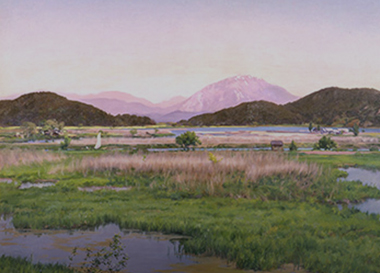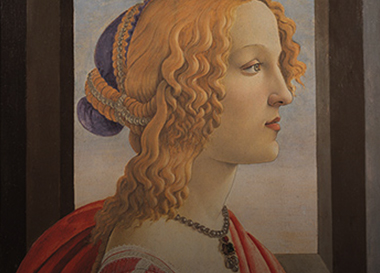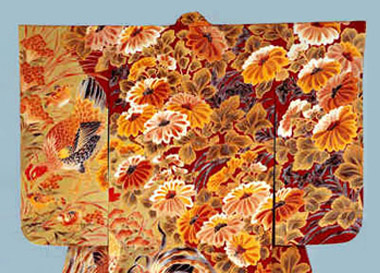The Marubeni Collection is comprised of paintings and costumes along with designs owned by Kyoto Marubeni.
The collection of paintings contains work by Japanese and Western artists, and most of the collection was obtained before 1979.
About the Marubeni Collection
How each Japanese painting was attained for the collection is different, and the works were accumulated gradually over the course of many years. Marubeni Shoten, the predecessor of Marubeni, hosted the Kusano-ha Kai and Akane Kai exhibits in order to promote research on design. The Biten exhibit held in Kyoto evolved from the Kusano-ha Kai and Akane-Kai exhibits and continues to this day held by Kyoto Marubeni Co., Ltd. Such initiatives increased Marubeni’s connections with Japanese artists such as Eisaku Wada, Hakutei Ishii, and Riichiro Kawashima, and the number of paintings in the collection gradually grew. Marubeni had an especially strong relationship with Ryohei Koiso, who designed the front cover of the Marubeni internal newsletter and drew illustrations for newsletter articles from 1955 to 1961.
The collection of Western paintings began with the establishment of the Marubeni Art Gallery in 1969 when Marubeni became the first general trading company to begin a full-scale import and sales business for fine art. In order to host The Great Artworks by European Masters Exhibit, a part of the British Fair held in Tokyo that same year, the company imported many works of fine art from the UK, mainly masterpieces of Western painting, such as those by Botticelli, Gainsborough, and Corot. In 1974, Marubeni established Palace Art Co., Ltd., a subsidiary dedicated to fine arts. It purchased only works by Impressionists and École de Paris artists. However, the art business ended in 1979 in the aftermath of the second oil crisis. The artworks that remained as sales assets at that time were transferred to the HQ Collection, and they became the core of the Marubeni Collection’s painting category.
The collection of costumes began in 1929 when the company, at the time Marubeni Shoten, purchased a Noh costume. On many occasions, the company collected kosode (short-sleeved kimonos) from the Edo Period and kimonos created by modern craftsmen. The costumes were collected not only to study their design and creation. The people of Marubeni Shoten were also concerned about the declining value of dyed textiles amid the confusion before and during the war and decided to collect the costumes to leave behind a legacy for future generations. Such efforts resulted in the collection of about 400 costumes.
In the design category, masters from a variety of art disciplines created designs over a period of approximately 10 years for the aforementioned design exhibits, the Kusano-ha Kai and Akane Kai exhibits. Approximately 600 designs remain today.
*Only a portion of the collection is shown.





